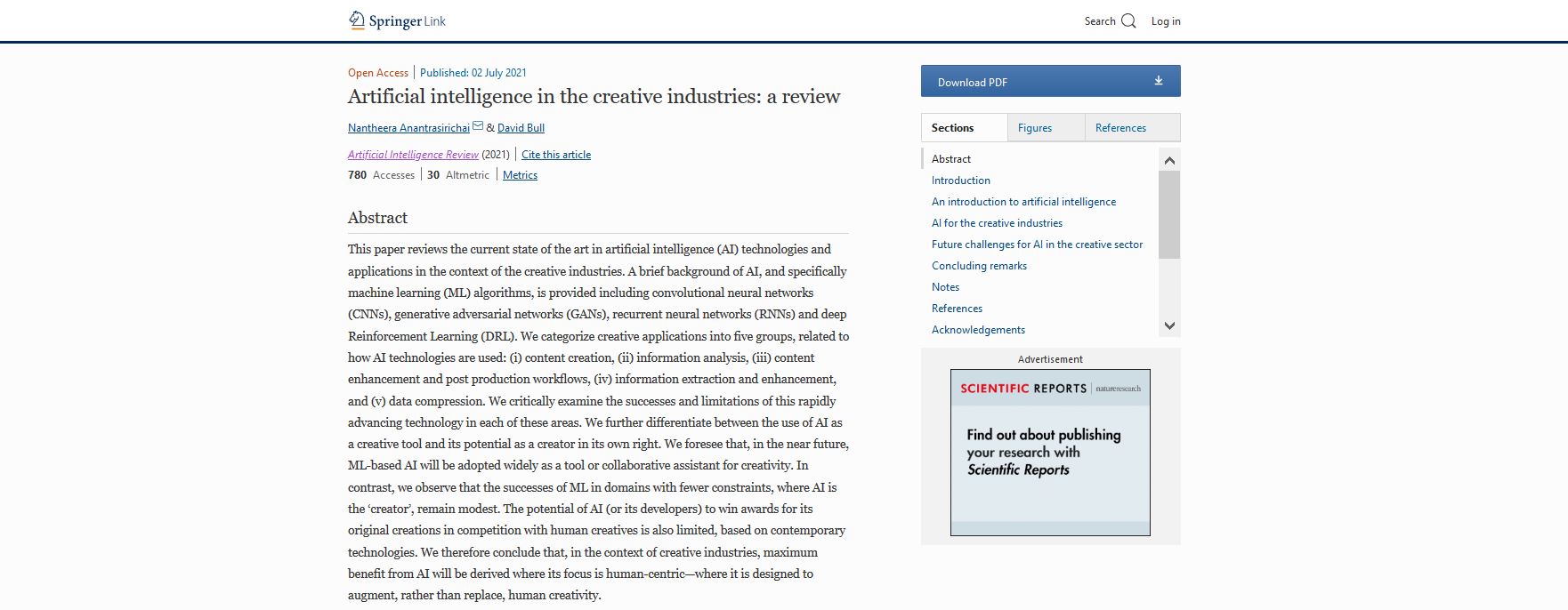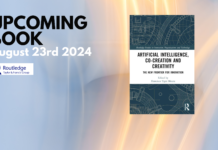From time to time I am asked by students and fellow researchers about recent and insightful publications on artificial intelligence (AI) or artificial creativity.
The main issue, normally, is that publications on AI tend to be extremely technical, which compromises the understanding of individuals that are not directly related to the field. In my case, for example, as a marketer I develop behavioral studies. I do not develop technologies.
Nevertheless, it is vital the understanding of core concepts related to AI and artificial creativity, frameworks and technology applications (just to name a few issues) in order to apply or further investigate them form a behavioral perspective. This is why the accessibility of academic publications is so important: to break boundaries of academic niches and reach a wider audience.
Artificial Intelligence in the Creative Industries: A Review
Recently, while searching on the topic, I came across an excellent paper: “Artificial Intelligence in the Creative Industries: A Review“, by by Nantheera Anantrasirichai and Dave Bull, from the University of Bristol.
The paper was published on July 2nd 2021 at the Artificial Intelligence Review Journal, and provides a detailed and extensive review on issues such as artificial intelligence and machine learning applied to the contexts of creativity. Applications include, for example, the contents of script, text generation, music, image and much more.
Here is the abstract of the paper:
“This paper reviews the current state of the art in artificial intelligence (AI) technologies and applications in the context of the creative industries. A brief background of AI, and specifically machine learning (ML) algorithms, is provided including convolutional neural networks (CNNs), generative adversarial networks (GANs), recurrent neural networks (RNNs) and deep Reinforcement Learning (DRL). We categorize creative applications into five groups, related to how AI technologies are used: (i) content creation, (ii) information analysis, (iii) content enhancement and post production workflows, (iv) information extraction and enhancement, and (v) data compression. We critically examine the successes and limitations of this rapidly advancing technology in each of these areas. We further differentiate between the use of AI as a creative tool and its potential as a creator in its own right. We foresee that, in the near future, ML-based AI will be adopted widely as a tool or collaborative assistant for creativity. In contrast, we observe that the successes of ML in domains with fewer constraints, where AI is the ‘creator’, remain modest. The potential of AI (or its developers) to win awards for its original creations in competition with human creatives is also limited, based on contemporary technologies. We therefore conclude that, in the context of creative industries, maximum benefit from AI will be derived where its focus is human-centric—where it is designed to augment, rather than replace, human creativity“.
To my knowledge, it is one of the most valuable reviews on artificial creativity.
Where to Find the Paper?
The paper, luckily, is made available with open access at the Springer website of the journal. Or click on the image to access the webpage of the journal where the paper is available.

So I hope the paper is as useful for you as it has been to me: facilitating the understanding of core concepts, its possible applications in creativity and opening new perspectives for research or consultancy.
Hope you will enjoy as much as I did. Cheers!





